
The island fox is a small fox species that is endemic to six of the eight Channel Islands of California. There are six subspecies, each unique to the island it lives on, reflecting its evolutionary history. They are generally docile, show little fear of humans, and are easily tamed. Island foxes played an important role in the spiritual lives of native Channel Islanders. They have been likely semi-domesticated as pets, used as pelts, or for other functions, like pest control.
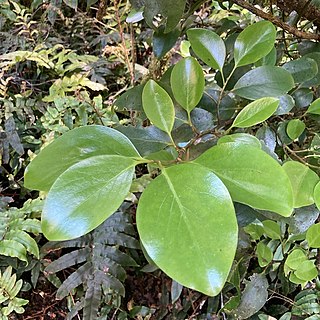
Griselinia littoralis, commonly known as kapuka, New Zealand broadleaf or pāpāuma, is a fast-growing small to medium-sized evergreen tree that is native to New Zealand.

Griselinia is a genus of seven species of shrubs and trees, with a highly disjunct distribution native to New Zealand and South America. It is a classic example of the Antarctic flora. It is the sole genus in the family Griseliniaceae. In the past it was often placed in Cornaceae but differs from that in many features.

Banksia littoralis, commonly known as the swamp banksia, swamp oak, river banksia or seaside banksia and the western swamp banksia, is a species of tree that is endemic to the south-west of Western Australia. The Noongar peoples know the plant as pungura, boongura or gwangia. It has rough, crumbly bark, linear, more or less serrated leaves arranged in whorls, yellow flowers and up to two hundred follicles in each head.

Heritiera littoralis, commonly known as the looking-glass mangrove or tulip mangrove, is a mangrove tree in the family Malvaceae native to coastal areas of eastern Africa, Asia, Melanesia and northern Australia. The common name refers to the silvery appearance of the underside of the leaves, resembling a mirror to some degree. The strong timber has uses in marine applications and elsewhere.
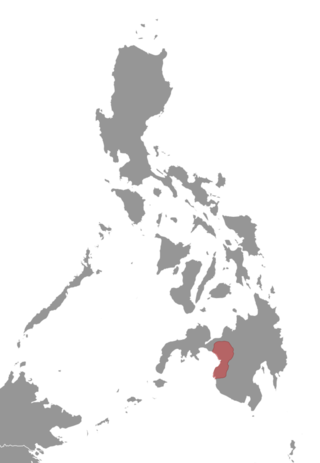
The Mindanao lowland forest mouse is a species of rodent in the family Muridae. It is found only in the Philippines.

The drab water tyrant is a species of bird in the family Tyrannidae, the tyrant flycatchers, and is the only species in the monotypic genus Ochthornis. It is found in Bolivia, Brazil, Colombia, Ecuador, French Guiana, Guyana, Peru, and Venezuela, where its natural habitat is rivers.

The Butiaba naked-tailed shrew is a species of mammal in the family Soricidae. It is found in Cameroon, Central African Republic, Republic of the Congo, Democratic Republic of the Congo, Kenya, and Uganda. Its natural habitat is subtropical or tropical moist lowland forests.
Limnocitrus is a genus of plant in the family Rutaceae with one species, Limnocitrus littoralis. It is native to Vietnam and Indonesia, where it is found on the island of Java in Jepara. In traditional Vietnamese medicine different parts of the plant have been used as an expectorant, antitussive product, for exudation, and the treatment of colds and fevers.

Spodoptera littoralis, also referred to as the African cotton leafworm or Egyptian cotton leafworm or Mediterranean brocade, is a species of moth in the family Noctuidae. S. littoralis is found widely in Africa, Mediterranean Europe and Middle Eastern countries. It is a highly polyphagous organism that is a pest of many cultivated plants and crops. As a result, this species was assigned the label of A2 quarantine pest by the EPPO and was cautioned as a highly invasive species in the United States. The devastating impacts caused by these pests have led to the development of both biological and chemical control methods. This moth is often confused with Spodoptera litura.

Acronychia littoralis, commonly known as the scented acronychia, is a species of small tree that is endemic to eastern coastal Australia. It has simple, glabrous, elliptic to egg-shaped leaves, small groups of yellow flowers and egg-shaped to more or less spherical creamy-yellow fruit.

Stenoptilia zophodactylus, also known as the dowdy plume, is a species of moth of the family Pterophoridae found worldwide. It was first described by Philogène Auguste Joseph Duponchel in 1840.

Allocasuarina littoralis, commonly known as black she-oak, is a species of flowering plant in the family Casuarinaceae and is endemic to eastern Australia. It is dioecious, or less commonly a monoecious tree or shrub, that has its leaves reduced to scales, usually in whorls of six to eight, the mature fruiting cones 10–30 mm (0.39–1.18 in) long containing winged seeds (samaras) 4.0–10 mm (0.16–0.39 in) long.
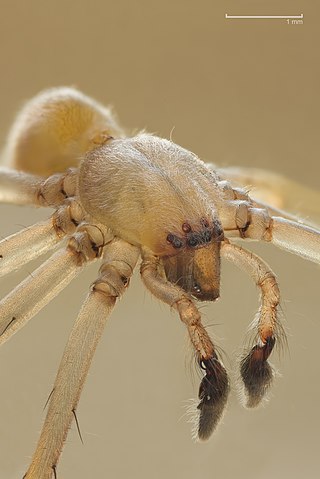
Cheiracanthium mildei is a species of spider from the family Cheiracanthiidae. C. mildei is commonly known as the northern yellow sac spider, a name it partially shares with many other spiders of its genus. Alternatively, it is also called the long-legged sac spider.
Heteracris trimaculata, also known as the three-spotted forest grasshopper, is a species of grasshopper in the family Acrididae. The species is endemic to the Usambara Mountains in Tanzania.
Cercyon littoralis is a species of water scavenger beetle in the family Hydrophilidae. It is found in Europe and Northern Asia and North America.
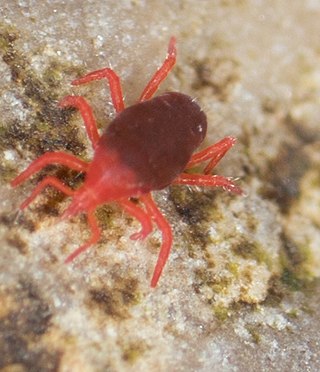
Neomolgus littoralis is a species of snout mite in the family Bdellidae. It is found in Europe.

Armadilloniscus ellipticus is a species of woodlouse in the family Detonidae. It is found in North America, Oceania, Europe, temperate Asia, Africa, and the Caribbean.

Eleodes littoralis is a species of desert stink beetle in the family Tenebrionidae. It is found in California. Due to its hair, it is similar to Eleodes osculans and Eleodes nigropilosa.
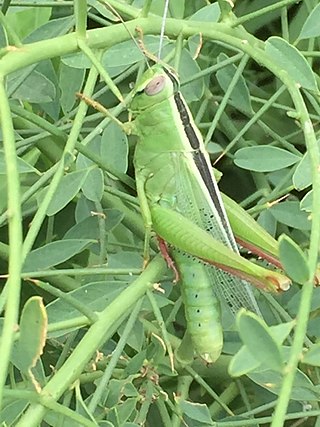
Heteracris pterosticha is a species of short-horned grasshopper in the family Acrididae. It is found in the Palearctic.


















